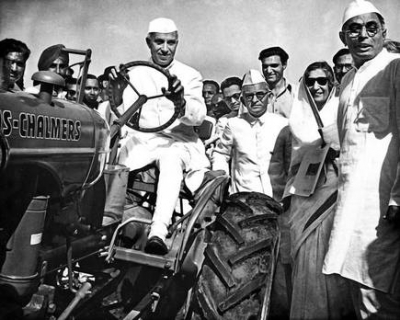
At the time of independence, India had already experienced the Bengal famine of 1943 where 3 million people had died of starvation. With this background, Nehru realized that to progress, India must focus on agriculture.
He said, “If our agricultural foundation is not strong then the industry we seek to build will not have a strong basis either. Apart from that, if our food front cracks up, everything else will crack up too.” Nehru saw the connection between agriculture and industry and realized that without agricultural advancements, no other industry would prosper.
He concentrated on four aspects of agriculture – upliftment of the farmer, development of rural infrastructure, higher productivity and harnessing science and technology in farming.
The nation thus embarked on the path of agrarian reform. Land reforms included the abolishing of giant landholdings, but efforts to redistribute land by placing limits on land ownership failed.
Attempts to introduce large-scale cooperative farming were confounded by the land-owning rural elite, who had considerable political clout in the Congress and were successful in opposing Nehru’s efforts.
Agricultural production expanded in the 1960s. The introduction of high-yielding varieties of wheat and rice began the Green Revolution in India. Better irrigation facilities and fertilizers led to the increase in food grain production, especially in Punjab, Haryana and Uttar Pradesh.
Picture Credit : Google




